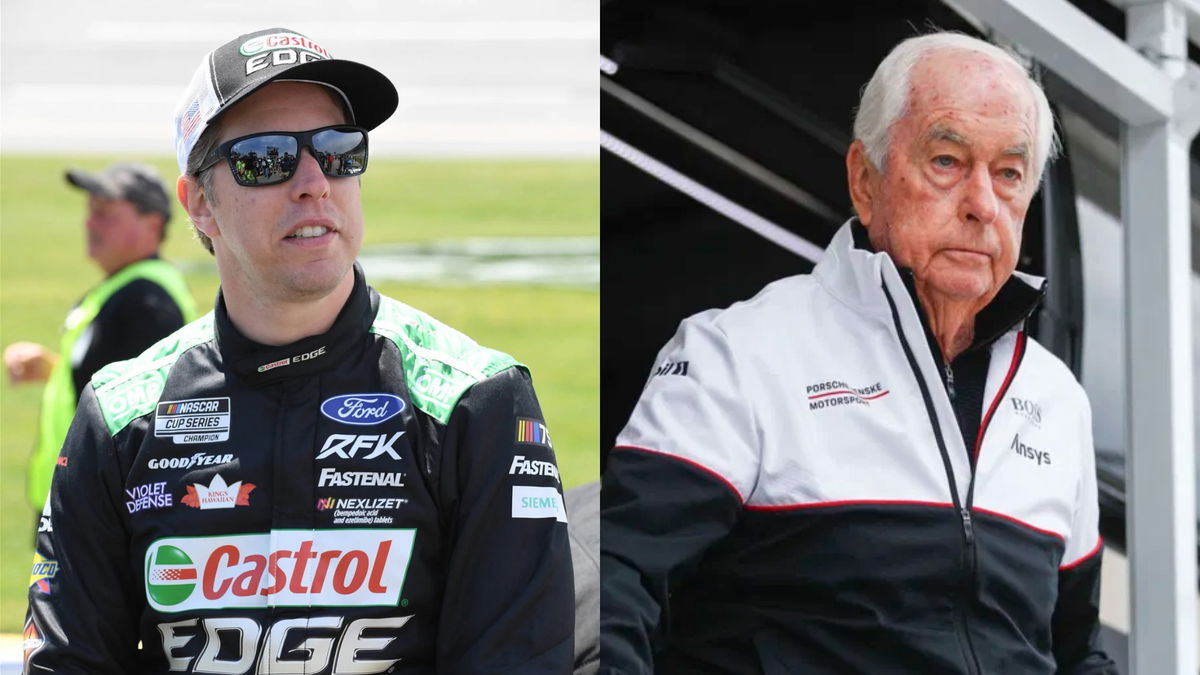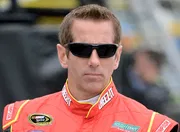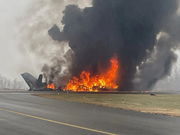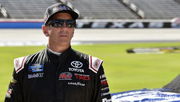
Imago
Image Credits: Imago

Imago
Image Credits: Imago
As NASCAR prepares to break new ground with its first-ever Cup Series race in Mexico City, teams are entering uncharted territory, both geographically and mechanically. The environment isn’t just another variable but a potential disruptor to NASCAR’s carefully balanced technical ecosystem. The strategies and decisions for the race will be pivotal, especially for organizations that operate under manufacturer umbrellas but with independent engineering philosophies. For teams like Roush Fenway Keselowski Racing and Team Penske, who share Ford resources but not necessarily identical objectives, this forces a collaborative and competitive dynamic.
Watch What’s Trending Now!
Behind the scenes, RFK Racing’s Brad Keselowski and Roger Penske’s Team Penske, his former team, may find themselves in quiet tension over a pivotal call. With Mexico City’s high-altitude Autódromo Hermanos Rodríguez presenting a unique set of engineering challenges that teams don’t face elsewhere on the schedule, NASCAR might mandate certain rules, especially for its tightly regulated Next Gen cars. As much as the next week is about racing in Mexico, it’s also about shaping up to be a quiet showdown in the Ford garage.
ADVERTISEMENT
How NASCAR’s Mexico Debut is Testing Engineering Alliances
Brad Keselowski, one of NASCAR’s most experienced drivers and co-owner of RFK Racing, finds himself at a critical crossroads ahead of the Cup Series’ historic debut in Mexico City. Sitting over 7,300 feet above sea level, as the cars are expected to run hotter in Mexico’s thinner air, engine temperature control is critical. NASCAR’s decision to allow a onetime cooling override wasn’t made lightly. In a pre-race interview, Brad Keselowski explained the team’s strategies for the Mexico race.
“You know, the high altitude is a big factor. Effectively, as you get higher altitude, the cars run hotter, don’t cool as well, and NASCAR very wisely opened up some options,” said Keselowski. “We need to get on the track to validate the science, but it looks pretty certain that we’ll go for the high-end package at this time. But, you know, maybe not. That’s why we practice,” the veteran driver explained.
Next week at Mexico, each manufacturer will bring an extra cooling system with adjustments to louver panels. After first practice, each manufacturer must decide if they use their regular ones or the ones that provide more cooling (b/c high altitude). Keselowski on the choice: pic.twitter.com/ep6qxsqR0l
— Bob Pockrass (@bobpockrass) June 8, 2025
ADVERTISEMENT
Following the interview, NASCAR reporter and insider Bob Pockrass also explained the cause of the issue. Writing on X, Bob explained, “The engines will run hotter because they will generate more horsepower in the higher altitude. So each manufacturer has what is considered an emergency cooling system that will help the engine cool but impact downforce. So each manufacturer will have to choose.”
The Next Gen cars have an opening or vent in the hood of the car, which is designed to release air from the engine and radiator. This is how these machines are cooled off. However, that airflow is diverted from aerodynamic surfaces, which could reduce down force, especially in Mexico City’s long sweeping turns. When asked about RFK Racing‘s strategies side-by-side with Team Penske, Brad Keselowski chose to let the engineers speak on it. “Well, the technical directors will make that decision between RFK and Penske,” said Keselowski.
ADVERTISEMENT
This landmark event, famously named the Viva Mexico 250, marks NASCAR’s first-ever international points race, part of a multi-year deal confirmed by NASCAR’s EVP Ben Kennedy. Drivers will be eager to tackle the 2.429-mile circuit’s hybrid layout of road course and oval elements, but for many, it is uncharted territory. Following a stretch of underwhelming finishes, Brad Keselowski needs redemption and will see the Mexico race as a turning point in the season. With Playoff aspirations still in reach, a solid result at this inaugural event could reignite momentum for both driver and team.
Top Stories
NTSB Appeals for Greg Biffle’s Wife’s Alleged In-Flight Text Messages as Crash Investigation Heats Up

Donald Trump Issues Moving Message of Condolence for NASCAR’s Greg Biffle & Family During North Carolina Address

Another Almost Fatal Disaster Surfaces From Statesville Airport Amidst Ongoing Greg Biffle’s Crash Investigation

Air Safety Investigator Probes Possible Co-Pilot Role Amid Greg Biffle’s Fatal Plane Crash Investigation

Greg Biffle’s Haunting Aviation Admission Resurfaces Hours After Tragic NC Plane Crash

Keselowski eyes charter opportunity amid 23XI Racing fallout
Brad Keselowski has weighed in on the escalating fallout from the U.S. Court of Appeals’ recent decision to revoke the charter status of 23XI Racing and Front Row Motorsports. The ruling, which stripped both organizations of their guaranteed grid spots, has sent ripples across the NASCAR community, with immediate implications for sponsorships, race eligibility, and long-term viability. As both teams now face the possibility of competing as open teams, industry observers and insiders are closely monitoring this situation.
ADVERTISEMENT
While 23XI and Front Row Motorsports still have until June 19 to appeal the verdict, the uncertainty has sparked speculation about potential suitors, should the charters officially go up for grabs. Speaking at Michigan International Speedway, Keselowski acknowledged the delicate state of affairs while also hinting at RFK Racing’s strategic interest. “I just wish the whole thing would find a peaceful resolution and the sport could kind of move on,” he said. “I think there’d be a long list of suitors…but you know RFK has a lease agreement currently with Rick Ware Racing…certainly we’re keeping our eyes open.”
Away from the boardroom, Keselowski is focused on reclaiming ground on track. Preparing for his 28th start at his home circuit of Michigan, the veteran driver will look to turn a corner for good on his home turf.
ADVERTISEMENT
ADVERTISEMENT
ADVERTISEMENT
ADVERTISEMENT

